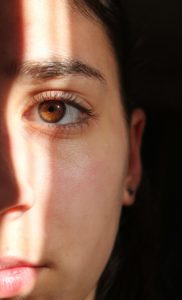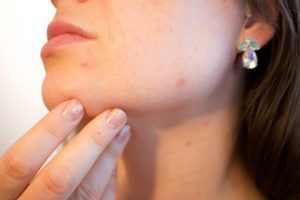Do you know someone, whether an acquaintance or loved one, who checks their door multiple times to see if it was really locked or wash their hands repeatedly before they eat? Are you wondering why they do that?
 Perhaps you, yourself, often engage in a particular behavior that but don’t really have any idea what drives it. It may have crossed your mind that these odd behaviors are signs of what is commonly referred to as OCD.
Perhaps you, yourself, often engage in a particular behavior that but don’t really have any idea what drives it. It may have crossed your mind that these odd behaviors are signs of what is commonly referred to as OCD.
The term is often used by people to describe repetitive or strange behavior. People will often refer to a person who likes to keep things organized or prefers to be clean as OCD, labeling them as a certain kind of person rather than recognizing their condition as a set of symptoms that they may be struggling with. Huntington Beach Christian Counseling provides support and understanding for those truly dealing with OCD.
This is evidenced by the fact that people rarely use the full name “Obsessive Compulsive Disorder.” For example, no one would say “there goes my friend cleaning my house again; he is very Obsessive Compulsive Disorder.” It sounds silly because using the whole name makes it hard to label a person.
Behaviors that a person is trying to manage as a result of their diagnosis may strike others as odd. This article will discuss some of the symptoms of Obsessive Compulsive Disorder that tend to be misunderstood, and hopefully, it will aid those who find themselves confused by the OCD symptoms they or their loved ones exhibit
Obsessive Compulsive Disorder (OCD) Defined
Many think of Obsessive Compulsive Disorder as a condition that makes people keep their house clean at all times or to organize random things wherever they go. Most of these people don’t really think of OCD as the driving force behind those who wash their hands all the time. They merely attached the acronym OCD to the behaviors.
There are a number of criteria that have to be met prior to an Obsessive Compulsive Disorder diagnosis. Both behavior and thoughts lay behind a diagnosis of OCD.
What are the Most Common OCD Symptoms?
A person may be given a diagnosis of obsessive compulsive disorder when they exhibit the following OCD symptoms:
Obsessions
Undesirable recurring urges, images, or thoughts that cannot be controlled or that occur whenever something unpleasant happens, causing distress or anxiety.
and/or
Struggling to suppress or disregard the thoughts (contamination), urges (wanting to injure someone), or images (picturing violence) by performing some action (performing a compulsion).
Compulsions
 Some of the ritual behaviors such as checking, ordering, hand washing, or other mental acts like counting, repeating words quietly, or praying that the person feels compelled to perform to relieve their obsession;
Some of the ritual behaviors such as checking, ordering, hand washing, or other mental acts like counting, repeating words quietly, or praying that the person feels compelled to perform to relieve their obsession;
and
A person behaves a certain way to reduce or prevent distress, anxiety, or to prevent a certain situation or event, although realistically, these have no connection to what they’re seeking to prevent at all.
Obsessions and Compulsions
The obsessions or compulsions consumes a lot of time, usually taking up to an hour a day. They can also be clinically distressing, socially damaging, occupationally hazardous, or detrimental to other fields of functioning. The obsessive or compulsive symptoms cannot be explained by another medical condition or mental disorder.
What Are The Most Commonly Misunderstood OCD Symptoms?
As mentioned, everyone is unique. Some display behaviors that may look like a sure indication of OCD, while others might not. There is a specific content of obsessions and compulsions that differ from individual to individual.
However, some symptoms are commonly found in Obsessive Compulsive Disorder including cleaning symmetry (symmetry obsessions and repeating, ordering, and counting compulsion), (contamination and cleaning compulsions), harm (fear of harming oneself and others and related checking compulsions), taboo or unacceptable thoughts (aggressive, religious, and sexual obsessions and compulsions).
The person acting out a compulsion may look like he or she likes doing it, but the truth is that it is merely a response to an obsession. Intrusive and unwanted obsessive urges, images, or thoughts usually result in anxiety or distress. A lot of people with OCD suffer from both obsessions and compulsions.
The compulsive act is performed in response to the obsession is to reduce the distress caused by the trigger or prevent a feared event. Compulsion may not be done for pleasure, but the relief it provides to those who are going through stress or anxiety matters more.
People with OCD will have either of the following:
- Good or fair insight – a belief that whatever it is that is causing them anxiety will probably be okay even without doing the compulsive act.
- Poor Insight – a belief that whatever it is that stresses them will most likely happen if they choose not to do the compulsive act.
- Little amount to no insight – a belief that whatever it is that worries them will happen for sure.
Up to 30% of individuals have a lifetime Tic Disorder. Males who experienced childhood-onset OCD will typically experience a different OCD course, a different set of symptoms, a different comorbidity, and different pattern of familial transmission than those with a history of Tic Disorders.
The difficulties that people suffering from OCD experience is higher in events where their obsessions and compulsions are triggered. They may experience anxiety involving recurrent panic attacks or disgust.
As they act out the compulsion, the person may also feel as if they’re incomplete. Depending on a person’s triggers, they may try to avoid meeting people, go to places, and hold on some things. Contamination is often experienced by some people in public.
It’s common for people investigating the behaviors they act out themselves or by others, to assume that whatever it is they believe is correct without really identifying specific symptoms that are different from each other. There are differences when it comes to the symptoms of OCD depending on age and gender, so it is best to be knowledgeable about what things to look for in people when figuring out if their behavior requires extra care.
 It seems that middle age adults appear to be the ones struggling with Obsessive Compulsive Disorder symptoms but the reality is that the mean onset age is 19.5 years of age with 1 in 4 cases beginning at age 14. Almost 25% of males experience onset prior to age 10 while those whose 35 years old or older rarely experience the onset of symptoms, although it does happen.
It seems that middle age adults appear to be the ones struggling with Obsessive Compulsive Disorder symptoms but the reality is that the mean onset age is 19.5 years of age with 1 in 4 cases beginning at age 14. Almost 25% of males experience onset prior to age 10 while those whose 35 years old or older rarely experience the onset of symptoms, although it does happen.
A lifetime of OCD symptoms is often triggered by an onset in childhood however 40% of those with childhood-onset may experience remission in adulthood. We should, therefore, be aware of the signs and symptoms in children as well. They get diagnosed with compulsion because it’s observable compared to obsessions. Although, both obsessions and compulsions can still be seen in children.
The symptoms children show are more variable but more stable compared to the symptoms of adults. The obsessions of children are more of harm while those of adults involve issues of death or getting sick (themselves or their loved ones).
Adolescents, on the other hand, is more associated with religious and sexual obsessions compared to children due to the difference in their age and the stage they’re in. Their obsessions and compulsions developmentally change too.
It’s understandable for young children to ask their parents to perform compulsive acts by giving them a certain number of kisses on the check before they go to bed. They may also ask for their parents to check the window a number of times to make sure it is locked. Their obsession with danger will go away once their parents act out what the child believes is keeping them safe.
What are Obsessive-Compulsive Related Disorders Symptoms?
Although we have already discussed what OCD is, there may still be some questions in your mind about the symptoms you’re experiencing or seeing in others. You’re probably aware of the obsession you have or the compulsive response you do but you can only associate it with one idea or thought. In that case, you must know about the several very specific disorders that can be categorized as obsessive-compulsive related disorders.
Body Dysmorphic Disorder
 Obsession with one or more perceived flaw (such as hair thinning or face wrinkles) or physical appearance defect (such as believing they are not pretty or handsome) that other people never noticed but at some point, made the person perform repetitive behavior (like checking themselves in the mirror) or a mental act (like comparing themselves to others) in response to their concern about how they look.
Obsession with one or more perceived flaw (such as hair thinning or face wrinkles) or physical appearance defect (such as believing they are not pretty or handsome) that other people never noticed but at some point, made the person perform repetitive behavior (like checking themselves in the mirror) or a mental act (like comparing themselves to others) in response to their concern about how they look.
Hoarding Disorder
Having a hard time throwing or giving away possessions (regardless of their value) such as newspapers, mail, or old clothing. It happens because one thinks the items still need to be kept or feeling anguished for discarding them. The difficulty of getting rid of possessions causes clutter in a busy area of the house and the hoarding behavior then results in clinically significant distress or damage in social, occupational, or other important areas of life.
Trichotillomania (Hair-Pulling) Disorder
Repetitive pulling of one’s hair causing hair loss usually targeting the scalp or eyebrows. It comes with rituals related to the hair such as the desire for certain texture or hair color. Some people may pull hair from other individuals or have the urge to do so (such as dolls, pets, sweaters, or carpets). The person tries several times to stop the hair pulling as it can cause clinically significant distress or impairment in social, occupational, or other vital areas of life.
Excoriation (Skin-Picking) Disorder
Constant skin picking using things such as fingernails or tweezers that results in lesions in body parts like the face, arms, and hands. It involves repeated attempts to reduce or stop skin picking. It can cause clinically significant distress or damage in social, occupational or other crucial areas of functioning.
In addition to the skin picking, skin rubbing, squeezing, lancing, and biting can also be experienced. Anxiety or boredom are some of the things that trigger skin picking. Tension is sometimes felt after which come feelings of relief, immediate satisfaction, or relaxation.
People may have observed these disorders while being exposed to the behaviors or just through their results. They also have some type of obsession, compulsion, or ritual. The symptoms experienced by some people can greatly affect their social lives as they feel embarrassed and ashamed of it.
It can be hard to be in a place that triggers compulsions, allow people to see how hoarding has affected your life by inviting them into your house or expose your body with visible scars as a result of picking or hair loss due to the pullings. But it’s important for you to live life to the fullest whether or not the world understands.
Since we are naturally capable of having thoughts and ideas that can comfort someone when they’re feeling triggered, it’s best for us to be more compassionate and understanding to others as well as to ourselves if we’re suffering from symptoms of obsessive-compulsive and related disorders. The more we know about these disorders, the more we know how to care for ourselves and others.
What Should You Do Next?
If you have compulsions or obsessions that hinder you from completely enjoying life and you want to know what to do next, there are therapists that can help you find freedom from the symptoms of OCD and related disorders. You will receive support as you deal with your symptoms. Regardless of whatever it is that you’re going through, remember that you don’t have to take this journey alone. Christian Counselors at Huntington Beach Christian Counseling are here to guide and support you every step of the way.
Photos:
“Eye,” courtesy of Guiliamar, pixabay.com, CC0 License; “Woman Crying”, Courtesy of Abigail Keenan, Unsplash.com, CC0 License; “Peace,” courtesy of Greyerbaby, pixabay.com, CC0 License; “Skin picking,” courtesy of Kjerstin_Michaela, pixabay.com, CC0 License
 Checking OCD
Checking OCD
 Perhaps you, yourself, often engage in a particular behavior that but don’t really have any idea what drives it. It may have crossed your mind that these odd behaviors are signs of what is commonly referred to as OCD.
Perhaps you, yourself, often engage in a particular behavior that but don’t really have any idea what drives it. It may have crossed your mind that these odd behaviors are signs of what is commonly referred to as OCD. Some of the ritual behaviors such as checking, ordering, hand washing, or other mental acts like counting, repeating words quietly, or praying that the person feels compelled to perform to relieve their obsession;
Some of the ritual behaviors such as checking, ordering, hand washing, or other mental acts like counting, repeating words quietly, or praying that the person feels compelled to perform to relieve their obsession; It seems that middle age adults appear to be the ones struggling with Obsessive Compulsive Disorder symptoms but the reality is that the mean onset age is 19.5 years of age with 1 in 4 cases beginning at age 14. Almost 25% of males experience onset prior to age 10 while those whose 35 years old or older rarely experience the onset of symptoms, although it does happen.
It seems that middle age adults appear to be the ones struggling with Obsessive Compulsive Disorder symptoms but the reality is that the mean onset age is 19.5 years of age with 1 in 4 cases beginning at age 14. Almost 25% of males experience onset prior to age 10 while those whose 35 years old or older rarely experience the onset of symptoms, although it does happen. Obsession with one or more perceived flaw (such as hair thinning or face wrinkles) or physical appearance defect (such as believing they are not pretty or handsome) that other people never noticed but at some point, made the person perform repetitive behavior (like checking themselves in the mirror) or a mental act (like comparing themselves to others) in response to their concern about how they look.
Obsession with one or more perceived flaw (such as hair thinning or face wrinkles) or physical appearance defect (such as believing they are not pretty or handsome) that other people never noticed but at some point, made the person perform repetitive behavior (like checking themselves in the mirror) or a mental act (like comparing themselves to others) in response to their concern about how they look.